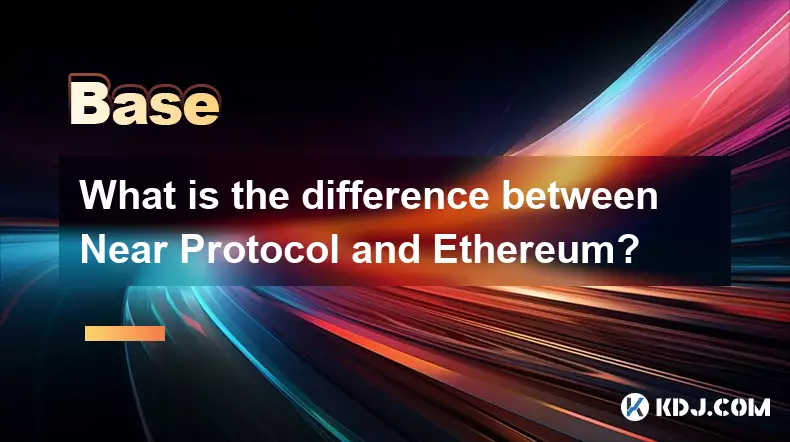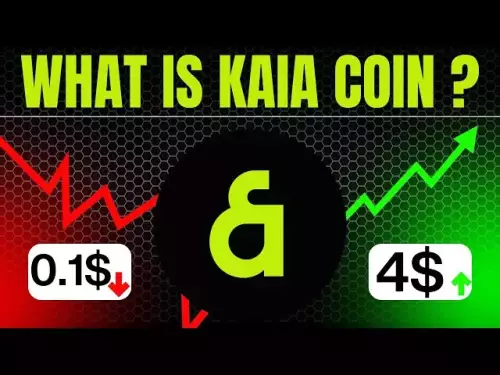-
 bitcoin
bitcoin $112715.707551 USD
-1.71% -
 ethereum
ethereum $4101.475385 USD
-3.01% -
 tether
tether $1.000644 USD
-0.02% -
 bnb
bnb $1207.619465 USD
-6.77% -
 xrp
xrp $2.501451 USD
-3.98% -
 solana
solana $202.947124 USD
-3.32% -
 usd-coin
usd-coin $1.000295 USD
0.04% -
 dogecoin
dogecoin $0.203884 USD
-4.47% -
 tron
tron $0.317154 USD
-1.72% -
 cardano
cardano $0.695009 USD
-4.43% -
 hyperliquid
hyperliquid $38.853961 USD
-8.23% -
 chainlink
chainlink $18.988674 USD
-4.64% -
 ethena-usde
ethena-usde $1.000233 USD
-0.03% -
 stellar
stellar $0.337050 USD
-3.63% -
 bitcoin-cash
bitcoin-cash $536.861728 USD
-1.28%
What does it mean for code to be "open source" in crypto?
Open source in crypto enables transparency, trust, and innovation by allowing public access to code, fostering collaboration, security audits, and permissionless development.
Oct 12, 2025 at 01:54 pm

Understanding Open Source in the Cryptocurrency Ecosystem
1. In the context of cryptocurrency, open source refers to software whose code is publicly accessible and can be inspected, modified, and redistributed by anyone. This transparency allows developers from around the world to contribute to a project’s development and verify its integrity. When a blockchain protocol or wallet application is open source, users are not dependent on a central authority to validate its functionality.
2. The ethos of decentralization in crypto relies heavily on open source principles. Projects like Bitcoin and Ethereum publish their core repositories on platforms such as GitHub, enabling peer review and collaborative innovation. This openness fosters trust because malicious code or backdoors can be detected and reported by the community.
3. Open source does not imply lack of ownership or governance. Many crypto projects operate under specific licenses—such as MIT or GPL—that define how the code can be used, modified, and distributed. These licenses protect original contributors while still promoting accessibility and collaboration.
4. Auditing becomes significantly easier when code is open source. Independent security researchers and firms regularly analyze smart contracts and consensus mechanisms for vulnerabilities. High-profile incidents, such as the DAO hack, underscored the importance of public scrutiny in preventing exploits.
5. Community-driven development thrives in open environments. Developers can fork existing projects to create new tokens or improve scalability. For example, Litecoin was created as a fork of Bitcoin with adjusted parameters. This flexibility accelerates innovation across the ecosystem without requiring permission from a central entity.
Benefits of Open Source Code in Blockchain Projects
1. Transparency builds credibility. When users can examine every line of code governing a decentralized exchange or lending platform, they gain confidence that funds are handled securely. This visibility reduces reliance on marketing claims and promotes data-driven trust.
2. Rapid iteration occurs due to global participation. A bug fix submitted by a developer in one country can be reviewed and merged within hours, improving system resilience. This agility contrasts sharply with closed-source systems where updates depend solely on internal teams.
3. Security improves through collective vigilance. With thousands of eyes scanning the codebase, potential attack vectors are more likely to be discovered before exploitation. Public testnets further enhance this process by simulating real-world conditions.
4. Interoperability increases when standards are openly shared. Token interfaces like ERC-20 and ERC-721 emerged from Ethereum’s open framework, allowing seamless integration across wallets, exchanges, and dApps. This standardization lowers entry barriers for new developers.
5. Long-term sustainability is enhanced. Even if the original team disbands, the community can maintain and evolve the project. This resilience ensures continuity for critical infrastructure like node software and consensus algorithms.
Risks and Challenges of Open Source Implementation
1. Not all open source projects are well-maintained. Some repositories suffer from outdated documentation, unpatched bugs, or abandoned development. Users must assess activity levels and contributor reputation before relying on a particular codebase.
2. Malicious actors may exploit openness by submitting harmful pull requests or creating deceptive forks. Vigilant moderation and code review processes are essential to prevent compromise. Projects often require multi-signature approvals for major changes.
3. Misunderstanding licensing terms can lead to legal complications. Developers who incorporate open source components into proprietary systems may inadvertently violate license requirements, risking litigation or forced disclosure.
4. Dependency risks arise when multiple projects rely on the same libraries. A vulnerability in a widely used package—such as an outdated cryptographic function—can propagate across numerous platforms simultaneously, amplifying systemic risk.
5. Attribution and credit distribution remain contentious. While contributions are visible, determining influence and reward allocation in decentralized communities can be complex, especially when financial incentives are tied to development efforts.
How Open Source Influences Decentralized Finance (DeFi)
1. DeFi protocols leverage open source to enable composability. One application can integrate with another like building blocks—yield aggregators use lending platforms, which in turn interact with decentralized exchanges. This “money legos” concept depends entirely on accessible code.
2. Transparency allows users to verify economic models. Interest rate formulas, collateral ratios, and fee structures are encoded in smart contracts that anyone can read. This clarity supports informed decision-making in high-risk environments.
3. Permissionless innovation empowers entrepreneurs. Startups can deploy variations of existing protocols without seeking approval, accelerating experimentation. Uniswap’s success inspired countless automated market maker designs based on its published logic.
4. User autonomy is strengthened when frontends are also open source. Individuals can run their own interfaces to interact with protocols, reducing exposure to phishing sites or compromised official dashboards.
5. Governance mechanisms often include code proposals. Token holders vote on upgrades whose implementation details are fully disclosed. This integration of technical and democratic processes exemplifies the fusion of code and community control.
Frequently Asked Questions
Q: Can a cryptocurrency be considered trustworthy if it’s not open source?A: Trust is significantly harder to establish without open source code. Closed-source blockchains limit external audits, making it difficult to verify security claims or detect hidden functionalities.
Q: Are all open source crypto projects free to use?A: While access to the code is free, usage may involve transaction fees, gas costs, or licensing restrictions depending on the project’s legal framework. Some licenses require derivative works to remain open.
Q: How can I verify that a crypto project’s code matches its live deployment?A: Tools like Sourcify and Etherscan allow verification of smart contract bytecode against published source code. Matching hashes confirm alignment between on-chain and repository versions.
Q: Does open source mean the project is immune to hacking?A: No. Open source improves security but does not guarantee safety. Poorly written code, design flaws, or misconfigurations can still lead to exploits, even with public scrutiny.
Disclaimer:info@kdj.com
The information provided is not trading advice. kdj.com does not assume any responsibility for any investments made based on the information provided in this article. Cryptocurrencies are highly volatile and it is highly recommended that you invest with caution after thorough research!
If you believe that the content used on this website infringes your copyright, please contact us immediately (info@kdj.com) and we will delete it promptly.
- XRP, Dogecoin, and Ozak AI: A New York Minute on Crypto's Hottest Plays
- 2025-10-15 16:25:14
- CRDB Tokenisation Service: Revolutionizing Finance in Tanzania and Beyond
- 2025-10-15 16:25:14
- Alvara Protocol Mainnet Launch: ERC-7621 Token Revolutionizes DeFi
- 2025-10-15 16:30:01
- Bitcoin, Gold, and Silver: Safe Haven Showdown in 2025
- 2025-10-15 16:30:01
- Sei Price Wobbles: Token Unlock Jitters Meet Downside Risk – A Trader's Guide
- 2025-10-15 16:45:12
- Peter Brandt, Bitcoin, and Investor Predictions: Navigating the Crypto Seas
- 2025-10-15 16:30:01
Related knowledge

How do decentralized identity (DID) solutions work?
Oct 14,2025 at 11:36pm
Understanding Decentralized Identity in the Blockchain Ecosystem1. Decentralized identity (DID) solutions are built on blockchain networks, allowing i...

What is the difference between Near Protocol and Ethereum?
Oct 15,2025 at 08:01am
Near Protocol and Ethereum: Core Architectural Differences1. Near Protocol operates on a sharded blockchain architecture known as Nightshade, which al...

What does it mean for code to be "open source" in crypto?
Oct 12,2025 at 01:54pm
Understanding Open Source in the Cryptocurrency Ecosystem1. In the context of cryptocurrency, open source refers to software whose code is publicly ac...

What is the purpose of a "testnet"?
Oct 12,2025 at 09:01am
Understanding the Role of Testnets in Blockchain Development1. A testnet serves as a parallel version of a blockchain network, designed specifically f...

How to avoid phishing scams in crypto?
Oct 13,2025 at 06:18pm
Understanding Common Crypto Phishing Tactics1. Cybercriminals frequently use fake websites that mirror legitimate crypto exchanges or wallet platforms...

What is the difference between single-collateral and multi-collateral Dai?
Oct 12,2025 at 05:18pm
Understanding Single-Collateral Dai1. Single-Collateral Dai (SCD) was the original version of the Dai stablecoin launched by MakerDAO in 2017. It allo...

How do decentralized identity (DID) solutions work?
Oct 14,2025 at 11:36pm
Understanding Decentralized Identity in the Blockchain Ecosystem1. Decentralized identity (DID) solutions are built on blockchain networks, allowing i...

What is the difference between Near Protocol and Ethereum?
Oct 15,2025 at 08:01am
Near Protocol and Ethereum: Core Architectural Differences1. Near Protocol operates on a sharded blockchain architecture known as Nightshade, which al...

What does it mean for code to be "open source" in crypto?
Oct 12,2025 at 01:54pm
Understanding Open Source in the Cryptocurrency Ecosystem1. In the context of cryptocurrency, open source refers to software whose code is publicly ac...

What is the purpose of a "testnet"?
Oct 12,2025 at 09:01am
Understanding the Role of Testnets in Blockchain Development1. A testnet serves as a parallel version of a blockchain network, designed specifically f...

How to avoid phishing scams in crypto?
Oct 13,2025 at 06:18pm
Understanding Common Crypto Phishing Tactics1. Cybercriminals frequently use fake websites that mirror legitimate crypto exchanges or wallet platforms...

What is the difference between single-collateral and multi-collateral Dai?
Oct 12,2025 at 05:18pm
Understanding Single-Collateral Dai1. Single-Collateral Dai (SCD) was the original version of the Dai stablecoin launched by MakerDAO in 2017. It allo...
See all articles


























![Staking ATH: How To Stake $ATH in October 2025 with 523% APY — [Step-By-Step Guide] Staking ATH: How To Stake $ATH in October 2025 with 523% APY — [Step-By-Step Guide]](/uploads/2025/10/15/cryptocurrencies-news/videos/staking-ath-stake-ath-october-apy-stepstep-guide/68eef94d80903_image_500_375.webp)















































